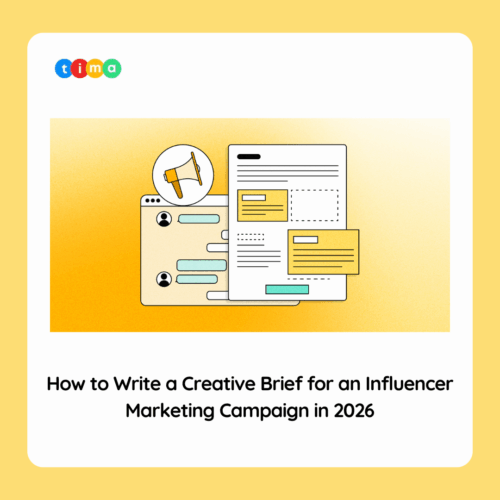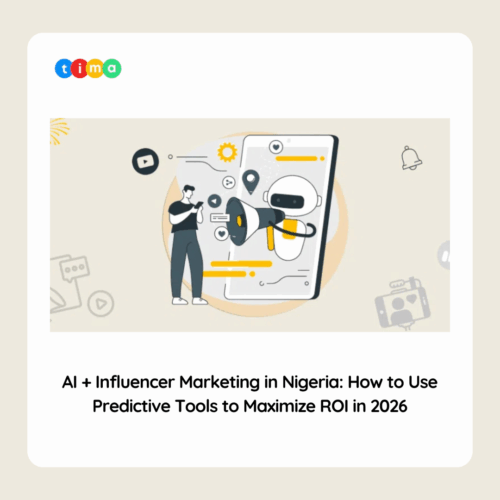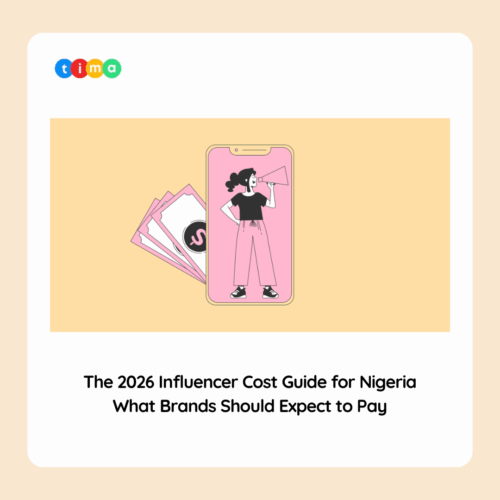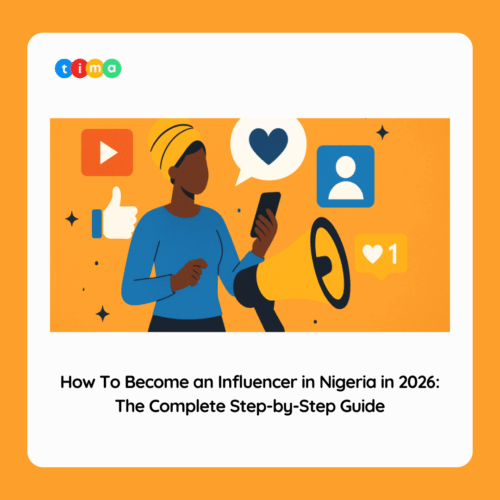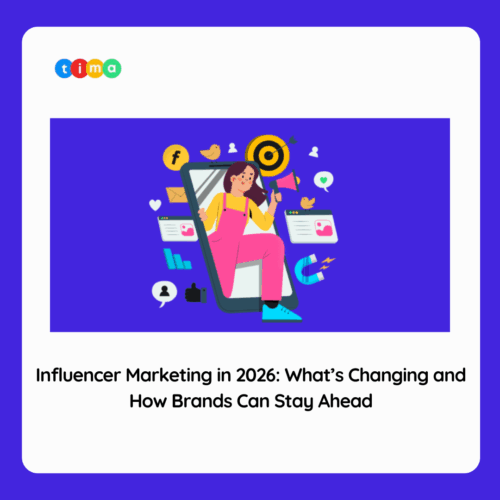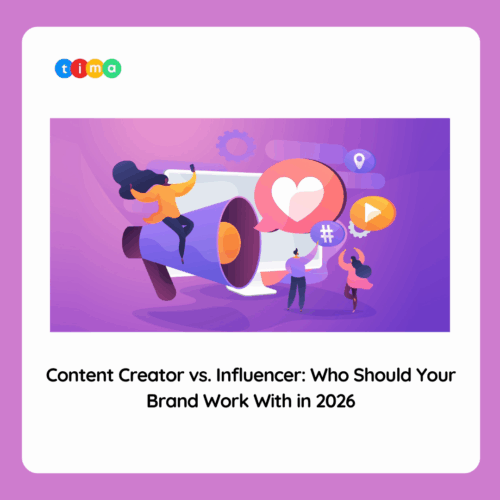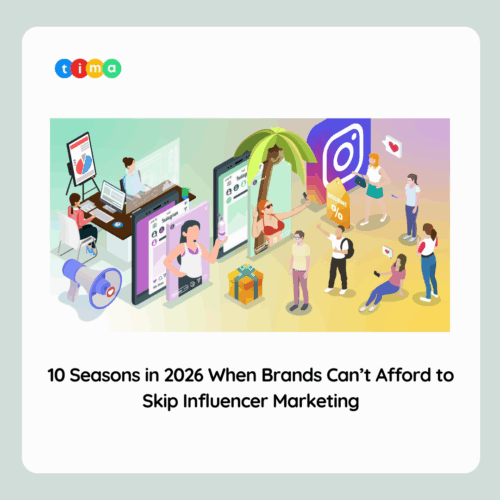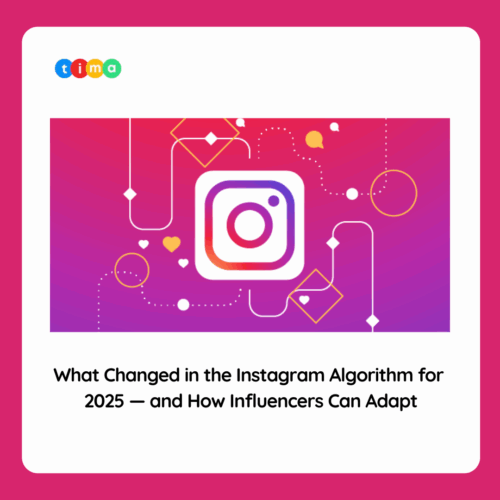In 2025, influencer marketing has matured far beyond product placements and hashtag campaigns. Today, it is a highly strategic partnership between brands and creators — one that demands clarity, collaboration, and vision from the very beginning. At the heart of this partnership lies the campaign brief: a document that can either empower great work or derail a project before it begins.
Despite the growth of the industry, many brands still underestimate the importance of crafting an exceptional influencer campaign brief. Too often, briefs are vague, confusing, or overly restrictive, resulting in missed opportunities and content that fails to resonate. In a digital ecosystem where audiences demand authenticity and creators manage their own brands as seriously as multinational companies, the quality of your campaign brief can make or break your success.
At TIMA, we have seen firsthand how a strong brief translates to stronger campaigns. In this detailed guide, we will walk you through exactly how brands should create the perfect influencer campaign brief in 2025 — ensuring your collaborations are clear, productive, and built for maximum impact.
Why the Influencer Campaign Brief Matters More Than Ever
The influencer marketing landscape has shifted dramatically over the past few years. In 2025:
- Creators operate like businesses — with managers, content teams, and negotiated contracts.
- Audiences have a sharper eye for authenticity — and can spot forced or insincere collaborations instantly.
- Platforms evolve monthly — from Threads Ads to TikTok Shop integrations, creators need tailored strategies per channel.
- Brands expect measurable ROI — awareness alone is no longer sufficient.
In this environment, a poorly written or ambiguous brief wastes time, erodes trust, and dilutes your brand message. A great brief, on the other hand, sets expectations, clarifies goals, and empowers influencers to deliver their best creative work aligned with your brand’s objectives.
The Foundations of a High-Impact Influencer Campaign Brief
A perfect campaign brief should do three things simultaneously:
- Define clear business objectives.
- Give creators enough information to understand your brand’s essence.
- Allow enough flexibility for influencers to craft authentic, platform-appropriate content.
In 2025, creators expect more than instructions; they expect collaboration. Your brief should feel like an invitation into your brand world — not a corporate rulebook.
Let’s break down how to build it, step-by-step.
1. Define Your Campaign Objectives Clearly
Every strong campaign begins with sharp internal alignment on goals. Before you approach any influencer, answer:
- What specific result are we aiming for?
- Is this a branding, engagement, traffic, lead generation, or conversion-focused campaign?
- How will we measure success?
Instead of vague ambitions like “increase awareness,” your brief should define success like:
- Achieve a 5% uplift in brand recall among Gen Z female shoppers in West Africa by July 2025.
- Drive 1,500 unique clicks to the launch page within 3 weeks through Instagram and TikTok posts.
Creators need to know what outcome they are helping you achieve, not just what product they are promoting. Precision at this stage will shape every piece of content that follows.
2. Describe Your Target Audience with Depth and Precision
Demographics alone are no longer sufficient. Your brief should include psychographics — motivations, aspirations, digital behavior patterns.
Answer:
- Who are they? (Beyond age and location.)
- What are their daily habits?
- What platforms do they trust most?
- What aesthetics, humor, or values do they connect with?
For example:
Our core audience consists of first-job millennials in Lagos and Nairobi, who prioritize affordable luxury, discover new brands through TikTok creators, and value ethical sourcing in the brands they support.
The more intimate your understanding of the audience, the easier it is for creators to tailor content that speaks authentically to them.
3. Position the Brand Clearly and Confidently
Don’t assume every influencer will naturally “get” your brand positioning. Clearly articulate:
- Brand values (e.g., innovation, sustainability, community).
- Tone of voice (e.g., witty, authoritative, heartfelt).
- Competitive positioning (e.g., premium yet accessible, niche but rapidly scaling).
- Unique Selling Proposition (USP) (e.g., first cruelty-free beauty brand made in Africa).
In a crowded digital space, clarity about what your brand stands for ensures influencers can weave those values into their content without diluting the message.
4. Define the Scope of Work and Deliverables in Detail
Be specific about what you expect from the influencer:
- Content types: Instagram Reels, TikTok videos, YouTube integrations, Blog posts, Threads carousels, LinkedIn posts.
- Quantity: Number of posts, stories, or videos.
- Content formats: Unboxing, tutorials, skits, testimonials, behind-the-scenes.
- Timeline: Draft deadlines, posting windows, embargo periods.
Example:
2 TikTok videos (minimum 15 seconds each)
1 Instagram Carousel (3-5 slides)
Content to go live between May 20 – May 30, 2025.
One draft round for brand review, with feedback within 48 hours.
Clear deliverables avoid misunderstandings and ensure creators can plan their production schedule professionally.
5. Provide Creative Direction Without Micromanaging
Influencers know how to engage their audience better than brands do. Your role is to offer inspiration, not creative control.
In your brief, share:
- Key messages you would like included (no rigid scripts).
- Campaign hashtags and required tags (@brandhandle).
- Visual style preferences (e.g., natural light, aspirational lifestyle, minimalist background).
- Content dos and don’ts (e.g., no visible competitor products, no political commentary).
Also, clearly communicate:
- Whether explicit product mentions are mandatory.
- Whether CTA links must be included (e.g., “Swipe up” or “Click link in bio”).
Creators need clear guardrails — but inside those, give them freedom to tell your story in a way that feels natural to their community.
6. State Usage Rights, Licensing, and Exclusivity Terms Upfront
In 2025, content rights are a significant factor in influencer partnerships.
Be explicit about:
- Usage rights: Can you repost, repurpose, or amplify their content through ads?
- Licensing duration: For how long? (e.g., 6 months, 1 year.)
- Geographic rights: Global usage or only in certain markets?
- Exclusivity clauses: Must the influencer refrain from promoting competitors during or after the campaign?
Clear agreements avoid legal misunderstandings and demonstrate professional respect for the creator’s intellectual property.
7. Outline Compensation and Payment Terms Clearly
Professional creators expect transparency. Your brief should include:
- Compensation: Flat fee, tiered payment based on deliverables, or performance bonuses.
- Payment timeline: (e.g., 50% upfront, 50% within 30 days of final content delivery.)
- Additional incentives: (e.g., commission for sales via affiliate links, bonuses for exceeding engagement targets.)
Always put agreements in writing, whether through contracts or Statements of Work (SOWs).
In a mature industry, prompt and professional payment practices will position your brand as a preferred partner.
8. Define Campaign KPIs and Reporting Expectations
Today’s creators understand the importance of data-driven marketing. Include in your brief:
- Primary KPIs: Impressions, engagements, click-through rates, conversions, sentiment analysis.
- Secondary KPIs: Saves, shares, profile visits.
- Reporting expectations: Screenshots of insights, UTM tracking codes, access to creator dashboards.
Some brands now request post-campaign performance reviews with creators to gather insights and optimize future collaborations. Smart brands treat influencers not just as megaphones, but as strategic partners with on-the-ground audience intelligence.
9. Explain the Approval Process
Nobody wants a campaign delayed because a draft sat in a brand manager’s inbox.
Your brief should explain:
- Who reviews the content (and who has final sign-off authority).
- How many feedback rounds are included (typically one round).
- Timeframes for approvals (e.g., maximum 48 hours after draft submission).
Efficient approvals create smoother relationships and faster time-to-market — both crucial in a competitive digital landscape.
10. Set the Tone for a Collaborative Partnership
Finally, recognize that great influencer collaborations are built on mutual respect.
A good brief doesn’t treat creators like vendors; it treats them like co-creators. At the end of your brief, communicate your excitement about the partnership. Encourage questions. Invite ideas. Position the brief as the foundation of something both sides will build together.
The tone you set here determines the energy of the entire campaign.
Final Checklist: What Every Perfect Influencer Brief Should Include
✅ Campaign background and objectives
✅ Target audience profile
✅ Brand positioning and tone of voice
✅ Scope of deliverables and content expectations
✅ Creative direction with room for interpretation
✅ Compensation, payment terms, and bonuses
✅ Licensing, rights, and exclusivity terms
✅ KPIs and reporting expectations
✅ Approval process and timeline
✅ Invitation to collaborate
If your brief hits all of these notes, you’re not just briefing influencers — you’re equipping them to help you win.
Conclusion: Build Better, Win Bigger
In 2025, the influencer marketing winners are the brands that don’t just “hire” creators — they empower them. And it all starts with the quality of your campaign brief.
A perfect brief is not a bureaucratic checklist. It’s a strategic tool that aligns brand and creator visions, eliminates ambiguity, and sets the stage for authentic, engaging content that delivers real business results.
At TIMA, we believe the future of influencer marketing belongs to brands that approach creator partnerships with precision, empathy, and professionalism. Crafting a strong influencer campaign brief is your first — and most critical — step on that journey.
Ready to build better campaigns with better briefs?
Let TIMA help you!


